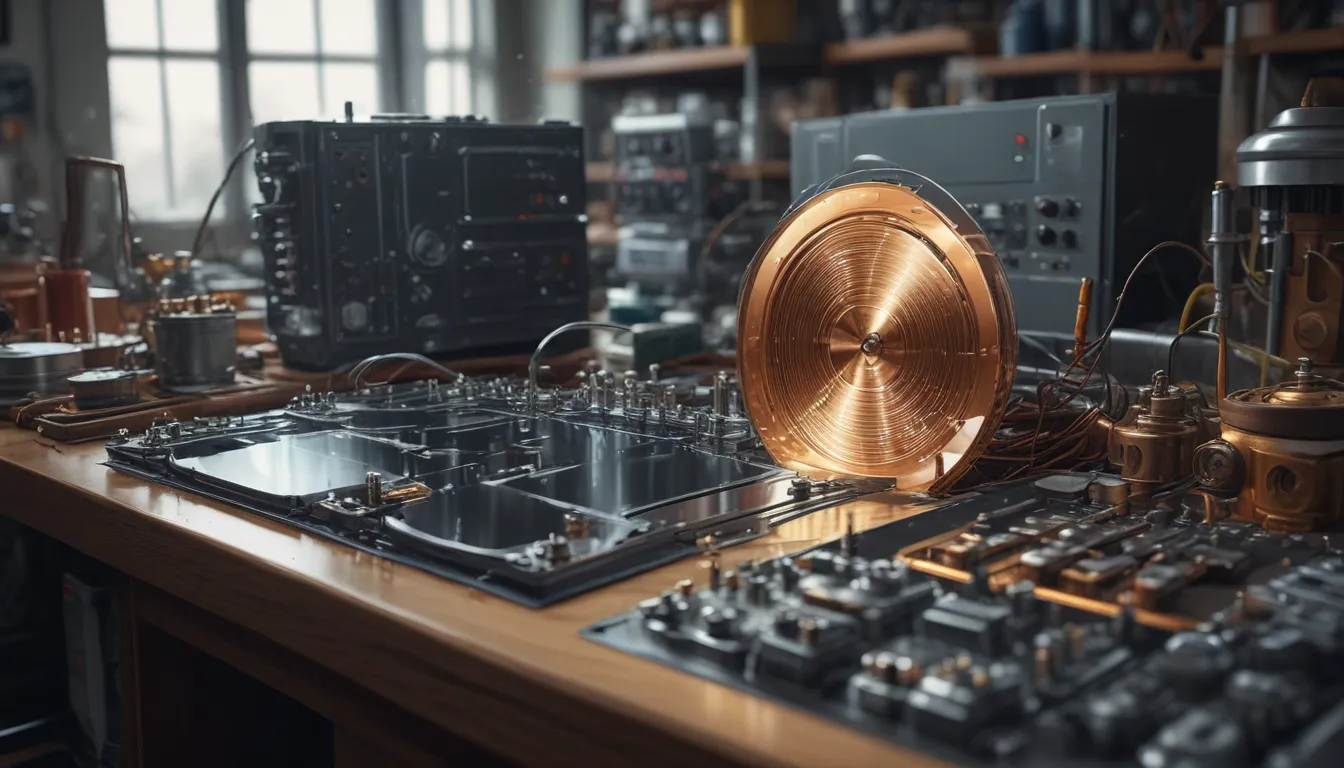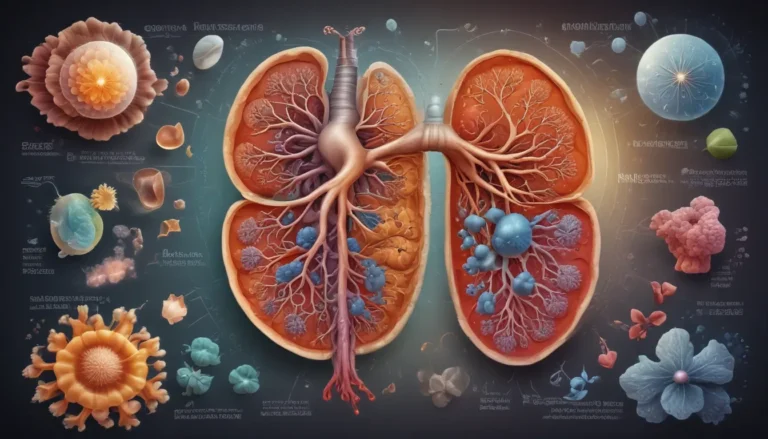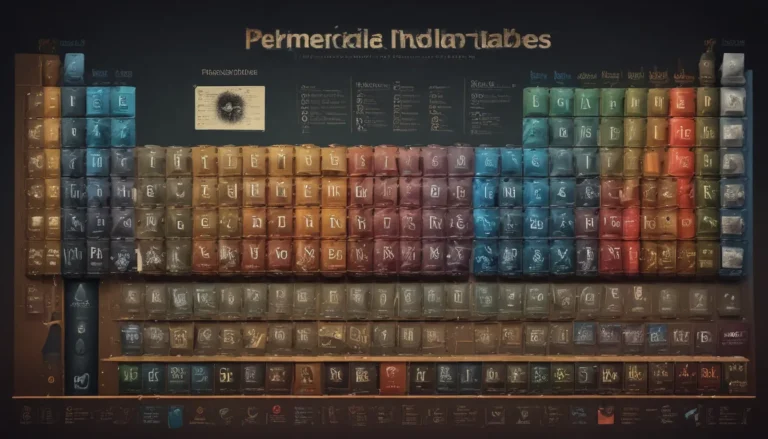A Note About Images: The images used in our articles are for illustration purposes only and may not exactly match the content. They are meant to engage readers, but the text should be relied upon for accurate information.
In the realm of manufacturing and industry, electroplating stands out as a captivating process that serves a multitude of purposes. From enhancing the appearance of everyday items to improving their durability and functionality, electroplating plays a vital role in various sectors. In this article, we will uncover some extraordinary facts about electroplating that showcase its remarkable impact on different industries. Join us on a journey through the world of electroplating and explore the wonders of this fascinating process.
Unveiling the Marvels of Electroplating
Electroplating, also known as electrodeposition, involves the application of a thin layer of metal onto an object’s surface through an electrochemical reaction. This process not only enhances the aesthetic appeal of objects but also adds a layer of protection, improving their longevity. From jewelry and automotive parts to electronic devices and space exploration instruments, electroplating finds diverse applications across various sectors.
Key Takeaways:
- Electroplating is like a superpower for everyday items, providing them with protection and style.
- The process serves as a recycling superhero, saving metals and giving new life to old objects.
Electroplating Transforms Jewelry into Works of Art
One of the most popular uses of electroplating is in the creation of stunning jewelry pieces. By coating base materials with precious metals like gold and silver, electroplating enables the production of elegant and affordable designs that dazzle the eyes.
Preserving Antiques with Electroplating Magic
In the world of antique restoration, electroplating plays a crucial role in preserving valuable items. By applying a thin layer of metal onto worn-out surfaces, electroplating not only protects the underlying material but also restores the original beauty of antique pieces.
Enhancing Durability through Electroplating
The application of electroplating extends beyond aesthetics to enhance the durability of various objects. By adding a corrosion-resistant metal layer to car parts, electroplating increases their lifespan and shields them against rusting, ensuring longevity and reliability.
Crafting Mirrors with Electroplating Precision
Did you know that the mirrors we use every day are a result of electroplating? By depositing a thin layer of silver or aluminum onto glass surfaces, electroplating enables the production of high-quality mirrors that reflect light and image with precision.
Electroplating’s Crucial Role in Electronics
The electronics industry relies heavily on electroplating for manufacturing printed circuit boards (PCBs). By electroplating copper onto PCBs, the process facilitates the efficient flow of electric current, making it an indispensable component in electronic devices.
Specialty Coatings and Unique Applications of Electroplating
Electroplating allows for the application of specialty coatings with unique properties that enhance the functionality of products. From providing heat resistance to lubrication, electroplated coatings offer a range of benefits that improve the performance of diverse items.
Exploring Electroplating’s Impact on Space Exploration
In the field of space exploration, electroplating plays a crucial role in creating reflective surfaces for telescopes and spacecraft instruments. These highly reflective surfaces optimize scientific observations and data gathering, contributing to advancements in our understanding of the universe.
Protective Layers for Automotive Parts
Automotive parts endure extreme conditions, making durability essential. Electroplating provides a protective layer that enhances longevity and safeguards against wear and tear, ensuring that vehicles operate efficiently and maintain their structural integrity.
Enhancing Everyday Utensils with Electroplating Magic
From silverware to kitchen appliances, everyday utensils undergo electroplating to enhance their appearance and durability. This process ensures that these items remain resistant to corrosion and preserve their polished shine, adding value to everyday objects.
Precision Printing with Electroplating Techniques
Electroplating is employed in creating intricate printing plates for the packaging industry. These plates allow for high-resolution prints and intricate designs, enhancing the visual appeal and branding of various products, creating a lasting impression on consumers.
Supporting Metal Recycling and Sustainability Efforts
Electroplating techniques contribute to metal recycling efforts by recovering metals from various sources, reducing the need for mining new ores. This sustainable practice promotes environmental conservation and resource efficiency, making electroplating an eco-friendly choice in metal finishing processes.
Conclusion
The world of electroplating is filled with marvels that continue to revolutionize various industries. From enhancing aesthetics to improving functionality, electroplating offers a wide range of benefits that positively impact our daily lives. Through this exploration of 11 extraordinary facts about electroplating, we have gained insights into its historical significance, innovative applications, and transformative potential in different fields. As electroplating evolves and advances, it paves the way for new innovations and discoveries, showcasing the boundless possibilities of science and technology.
FAQs: Exploring the Fascinating World of Electroplating
-
What is electroplating?
Electroplating is a process in which a metal object is coated with a thin layer of another metal using an electric current. This enhances the appearance, improves corrosion resistance, and provides durability to the object. -
How does electroplating work?
Electroplating works by immersing the object to be plated in a solution containing metal ions of the desired plating material. An electric current is passed through the solution, causing the metal ions to deposit on the object’s surface. -
What are the different types of electroplating?
Common types of electroplating include gold plating, silver plating, chrome plating, nickel plating, and copper plating, each with unique applications and benefits. -
What are the applications of electroplating?
Electroplating is used in industries such as jewelry making, automotive manufacturing, electronics, aerospace, and decorative items to improve appearance, provide corrosion resistance, and enhance durability. -
Is electroplating environmentally friendly?
Electroplating can be environmentally friendly with proper waste treatment and recycling methods. Advanced technologies and eco-friendly plating solutions help minimize environmental impact. -
Can any metal be electroplated?
Most metals can be electroplated, but success depends on factors such as metal compatibility, plating solution composition, and surface preparation of the object. -
How long does the electroplating process take?
The duration varies based on object size, complexity, desired plating thickness, and metal type, ranging from minutes to hours. -
Is electroplating cost-effective?
Electroplating offers cost-effectiveness compared to other methods, providing precise control over plating thickness, reducing waste, and delivering durable results.
Electroplating opens the door to a world of possibilities, transforming ordinary objects into extraordinary pieces that shine with beauty and durability. Join us in exploring the wonders of electroplating and uncovering the magic behind this remarkable process.






